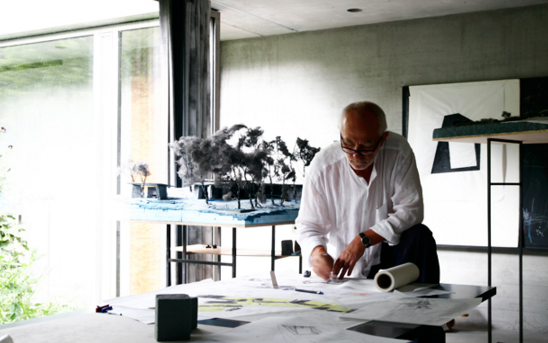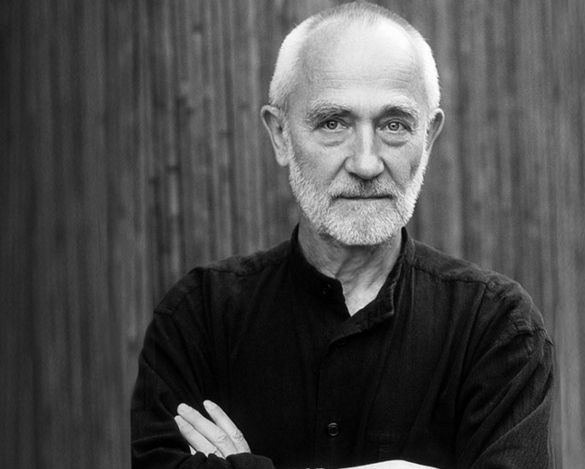 .
.
A few years ago Peter Zumthor was awarded a Golden Medal by RIBA – Royal Institute of British Architects (Britain’s most prestigious prize for architecture).
By chance, I found on the Internet the video of the lecture he gave in London for this occasion. I was so impressed by the similarities between his approach to architecture and ours that I cannot help talking about it… but first let me share the video of his speech.
The background
.
Peter Zumthor is the son of a cabinetmaker – like Paolo Ponti- and this could be the reason why both of them are so pragmatic and love materials rather than pure form. They are both architects by training and profession, but in their blood there is still something about craftsmanship. Zumthor admits not being so concerned about Beauty (I mean the abstract architectural Beauty), but his work is more about “creating a space that is just right for his purpose”. This has always been our first aim at PoddaPonti Architetti. Shall we say that function always comes first and beauty follows? (The rules of Vitruvius is all about this: Utilitas/Function + Firmitas/Permanence = Venustas/ beauty).
.
Peter Zumthor is the son of a cabinetmaker – like Paolo Ponti- and this could be the reason why both of them are so pragmatic and love materials rather than pure form. They are both architects by training and profession, but in their blood there is still something about craftsmanship. Zumthor admits not being so concerned about Beauty (I mean the abstract architectural Beauty), but his work is more about “creating a space that is just right for his purpose”. This has always been our first aim at PoddaPonti Architetti. Shall we say that function always comes first and beauty follows? (The rules of Vitruvius is all about this: Utilitas/Function + Firmitas/Permanence = Venustas/ beauty).
.
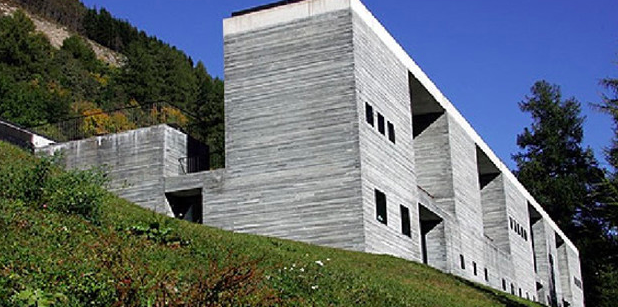
.
The project.
.
One of the dreams of Zumthor is to design “a house without a form”. He set up a project starting from the site and the brief. That’s exactly what we do at Poddaponti Architetti and at Ermesponti. Each project is always site-specific and custom-designed according to the exact needs of the client (we never forget the lesson of “Genius Loci”).
.
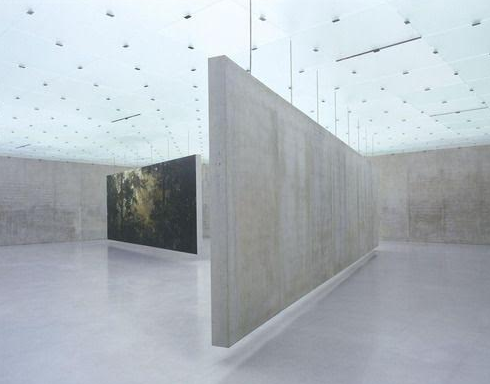
.
The process.
.
Zumthor defines his approach to the whole project as a “holistic process”– great expression! We are not so keen on oriental language, but the concept we have in mind is exactly the same.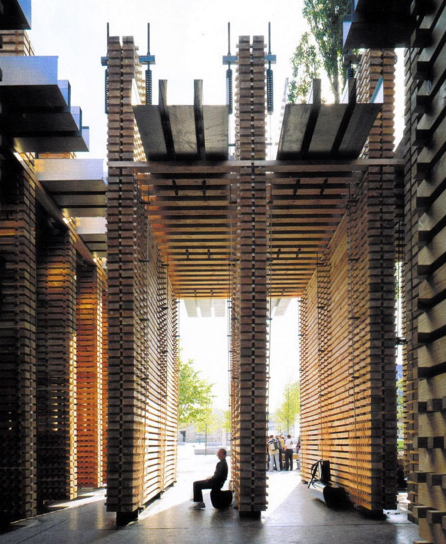 According to our cultural legacy, we rather prefer to call it “end-to-end process”. In fact the cultural background of this approach is the Italian Bottega or handicraft workshop of the Renaissance and the theory of architecture described by Leon Battista Alberti, which is still unrivalled nowadays. ( Even the most famous entrepreneur of today, Steve Jobs, set up Apple using these ideas)
According to our cultural legacy, we rather prefer to call it “end-to-end process”. In fact the cultural background of this approach is the Italian Bottega or handicraft workshop of the Renaissance and the theory of architecture described by Leon Battista Alberti, which is still unrivalled nowadays. ( Even the most famous entrepreneur of today, Steve Jobs, set up Apple using these ideas)
 According to our cultural legacy, we rather prefer to call it “end-to-end process”. In fact the cultural background of this approach is the Italian Bottega or handicraft workshop of the Renaissance and the theory of architecture described by Leon Battista Alberti, which is still unrivalled nowadays. ( Even the most famous entrepreneur of today, Steve Jobs, set up Apple using these ideas)
According to our cultural legacy, we rather prefer to call it “end-to-end process”. In fact the cultural background of this approach is the Italian Bottega or handicraft workshop of the Renaissance and the theory of architecture described by Leon Battista Alberti, which is still unrivalled nowadays. ( Even the most famous entrepreneur of today, Steve Jobs, set up Apple using these ideas).
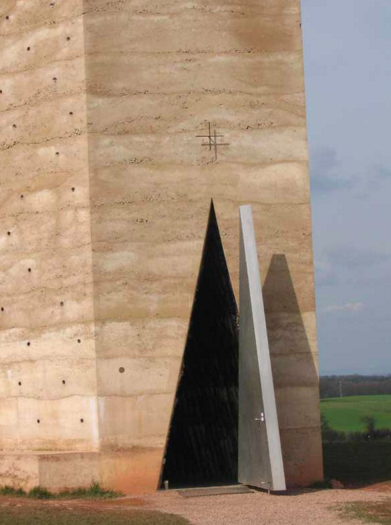 The client.
The client..
He declares:
.
…if someone wants a Zumthor building, that’s not my client! If someone wants a well-made building, that’s my client!
He also adds:
.
I am not a brand
We haven’t the privilege of Peter Zumthor who can choose and sometimes refuse clients, but we are lucky enough because our clients choose Ermesponti for the same reason of top quality. If they want a custom-designed, custom-made, personalized interior, they call us!
.
The aim.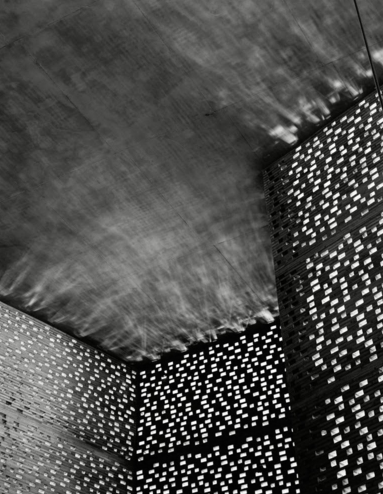

.
The title of the lecture was ” Presence in Architecture” and this theme seems to concern Peter Zumthor the most. We agree with him. We believe that architecture is about creating “a sense of space”, of interior space, which is able to make an immediate impression on people who walk there. Of course we do not have the same tasks and the same big project, but, like him, we always search for this “presence” in our small project. We should call it the fifth dimension, He talks about the aim of experiencing real architecture which is like the experience of real music. There is a historic relationship between harmony in these two subjects. We totally agree.
.
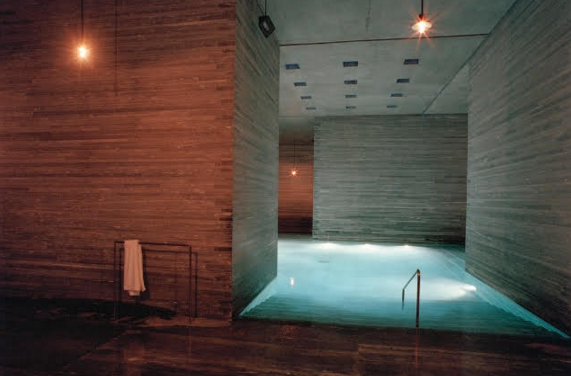 In the end he compared ‘presence in architecture’ with the one we have in a pure landscape. He concluded the lecture with these last words:
In the end he compared ‘presence in architecture’ with the one we have in a pure landscape. He concluded the lecture with these last words:.
You know what I mean. You have a feeling. You are in the world, you are part of the world and there is something bigger than you
That’s a good point for creative people! We create pieces of architecture, art or music, but not the whole world! We invent using our hands and brain and the legacy of the past. With a sense of humility we should say…
.
We are all little beings!


